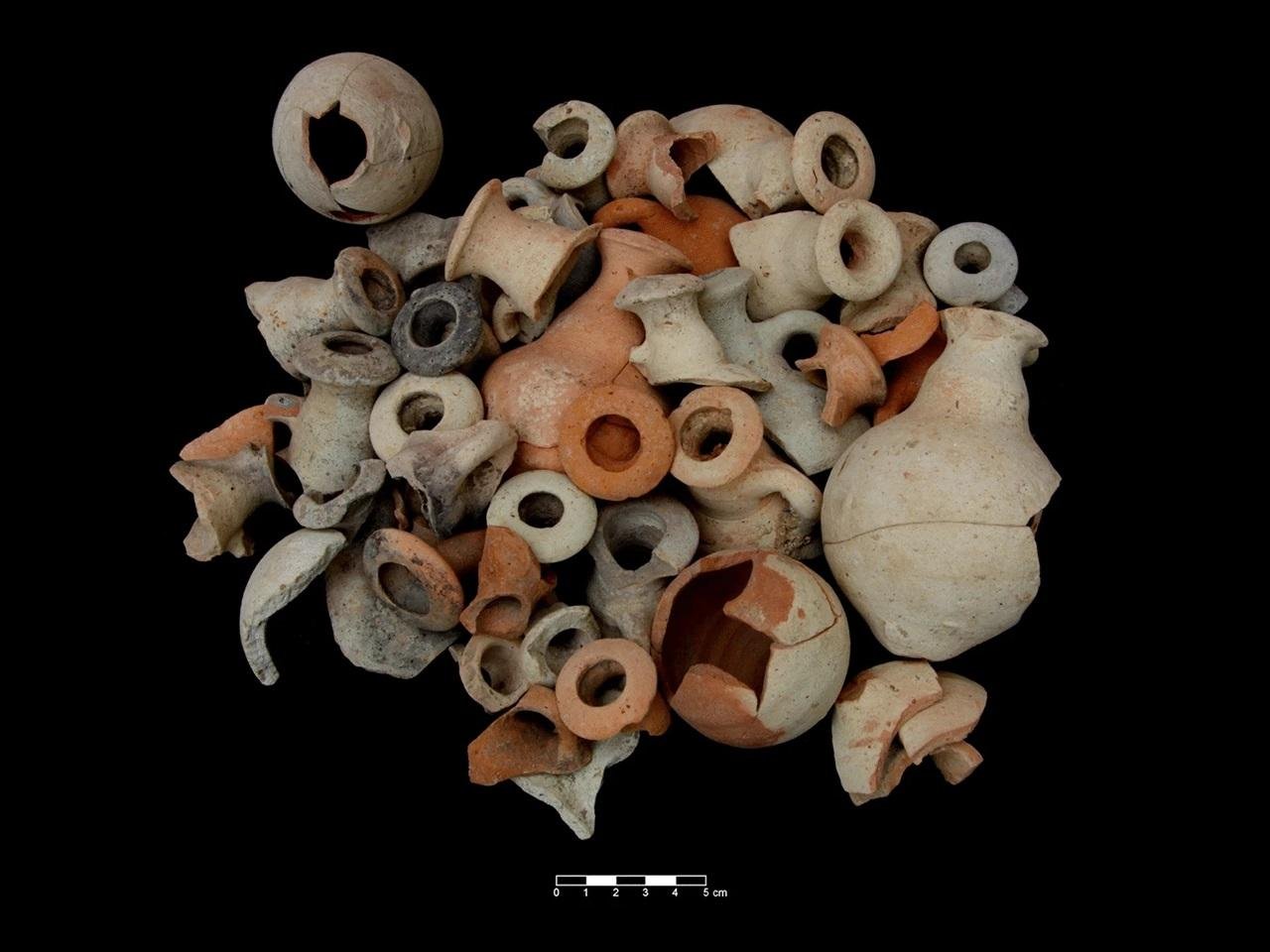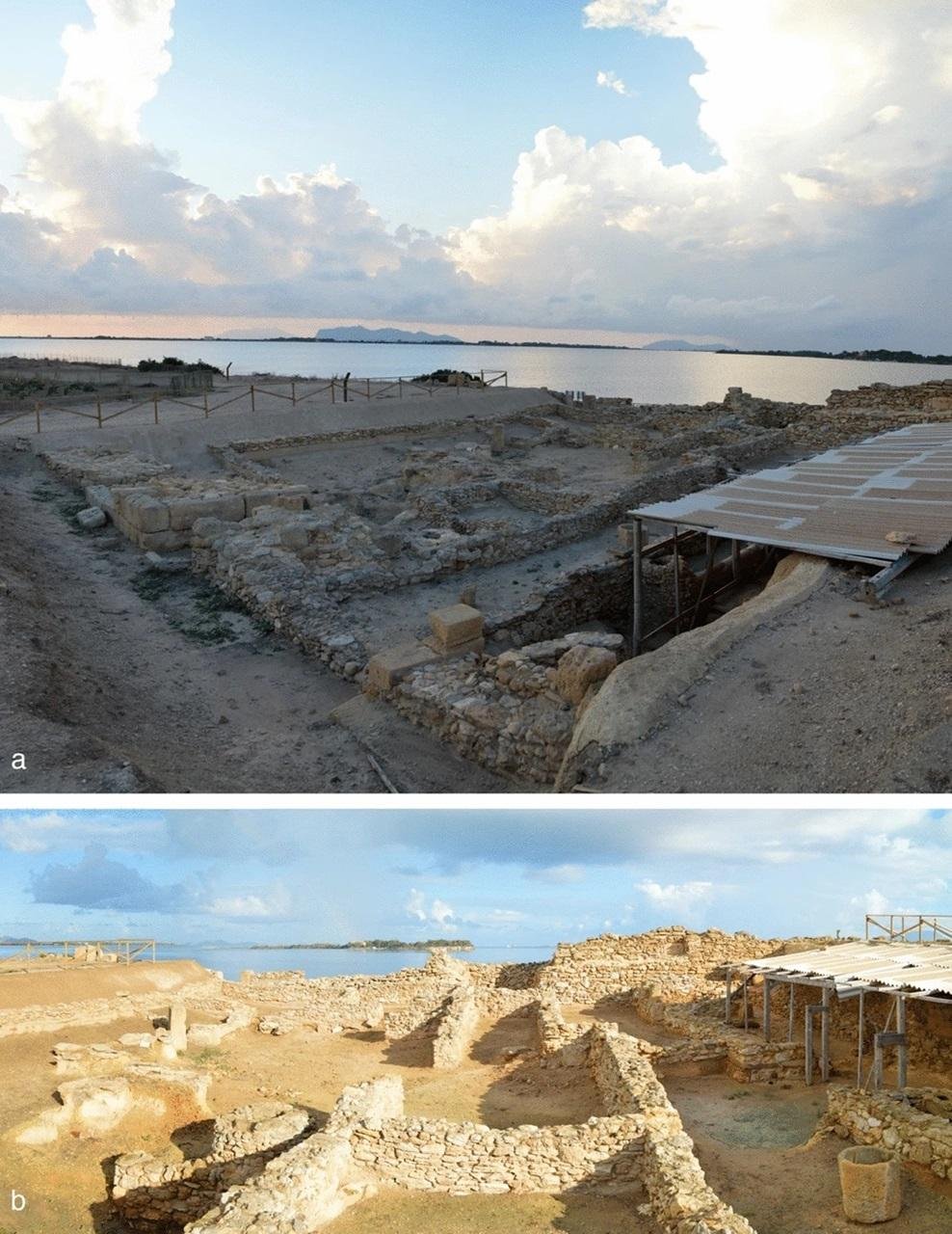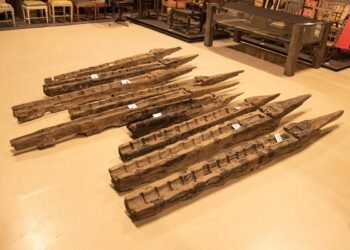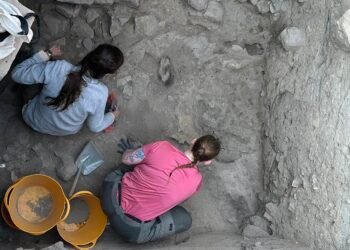Archaeologists routinely uncover pottery, coins, and bones, but the scents of the past are much more elusive. An innovative interdisciplinary study has now traced fragrances that were once at the heart of Phoenician culture. Through the analysis of 51 ceramic oil vessels from the site of Motya, a small island off Sicily’s coast, researchers have uncovered how fragrant oils contributed to identity, memory, and cultural exchange in the Iron Age Mediterranean. The research was published in the Journal of Archaeological Method and Theory.

The vessels—plain, narrow bottles between 15 and 18 centimeters high—were used from the 8th to the 6th centuries BCE. They were discovered in domestic locations, cemeteries, and sacred areas, demonstrating that they were used for various purposes over a wide geographic area. Analytical tests of the ceramic material indicate that their production began in southern Phoenicia, in a region stretching from modern Beirut to the Carmel coast.
The organic residue analysis offered further information. Eight of the vessels examined contained traces of plant oils combined with pine and mastic resin, substances long associated with perfume and preservation. This is a strong indication that these vessels carried aromatic unguents. These oils were more than commodities to be traded; they embodied connections to homeland traditions. For Phoenician settlers establishing communities across the Mediterranean, these scented oils would have acted as sensory links to their place of origin, consolidating shared practices among dispersed peoples while also being exchanged with local populations.
The Phoenicians, renowned seafarers and merchants, were also innovators in the migration of cultural practices. Aromatic materials held a central position in both everyday life and ritual practice, and their exchange facilitated the creation of links between migrant and indigenous groups. At Motya, the ongoing appearance of oil bottles over more than two centuries implies a consistent supply of what was perhaps a recognizable product tradition, one that possessed both practical and symbolic value.

These vessels were used not only in Phoenician communities but also appeared in elite contexts among non-Phoenician peoples. Their presence in these contexts indicates that scented oils became part of the strategies for building alliances and projecting influence outside of their own communities. Thus, the use of perfume was instrumental in cross-cultural interactions and helped spread Phoenician practices throughout the western Mediterranean world.
The study places these findings in the larger framework of Iron Age history. The disappearance of the bottles has often been linked to the rise of Carthage, but researchers now suggest that instability in the Levant, particularly during the Neo-Babylonian period, could have disrupted both production and exchange. These changes in political and economic conditions might explain the reduction in the circulation of these bottles by the end of the 6th century BCE.
Beyond the immediate findings, the study illustrates the value of exploring the sensory aspects of the past. Migration and cultural exchange were not just matters of people and goods moving but also of the spread of more intangible factors, such as smell, memory, and sensory experience. Scents—elusive to preserve but potent in identity-shaping—were part of how communities brought their heritage to new lands.
By applying advanced scientific methods, archaeologists have shed light on a previously overlooked aspect of ancient life. The Motya artifacts provide an evocative reminder that the past was not only seen and heard, but also smelled, with perfumes acting as an invisible thread binding distant places and peoples across the Mediterranean.
























Comments 0